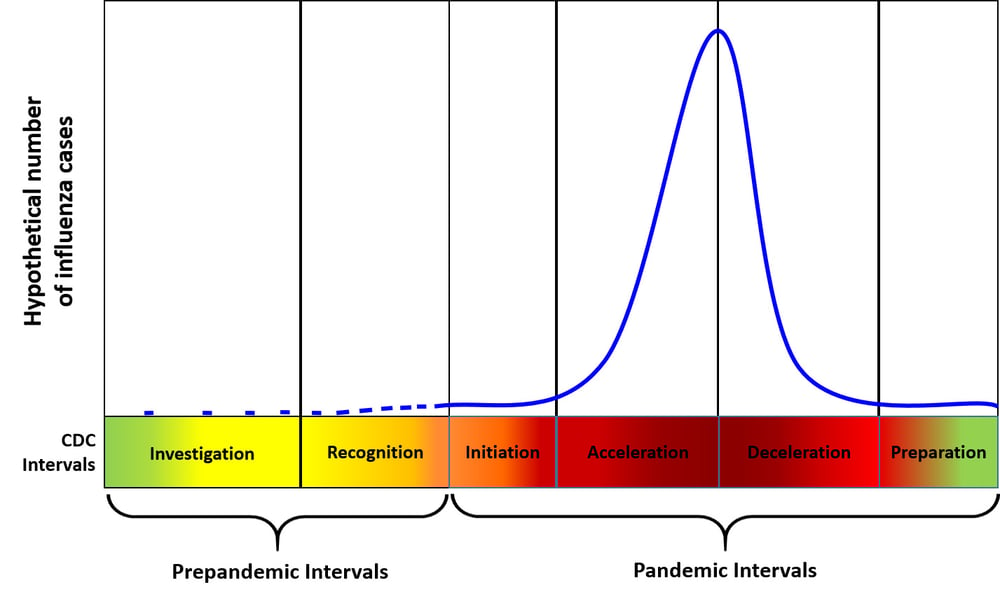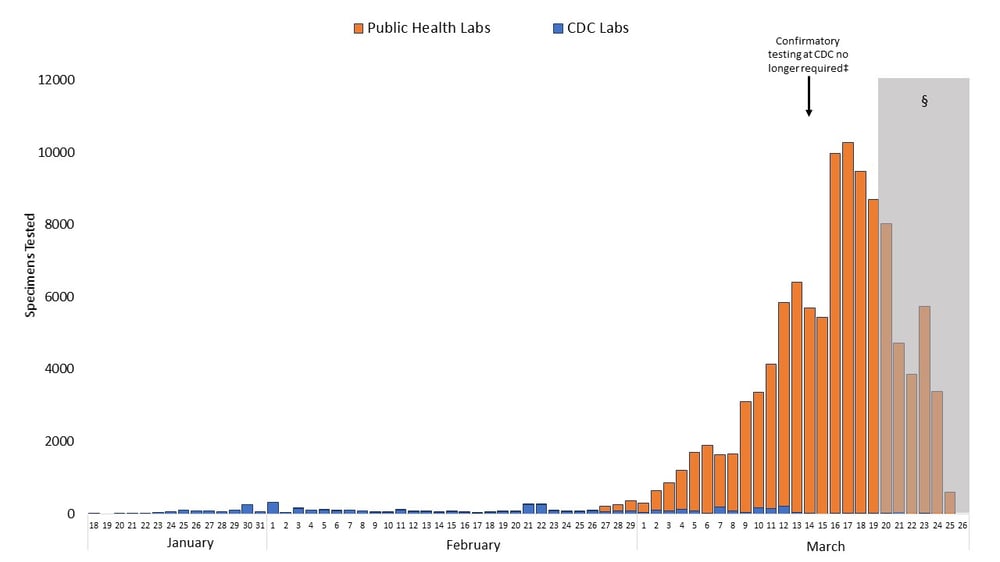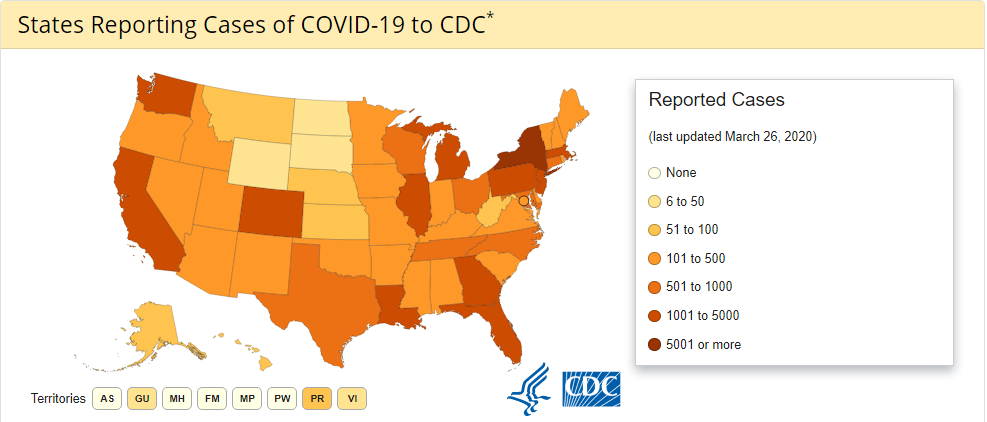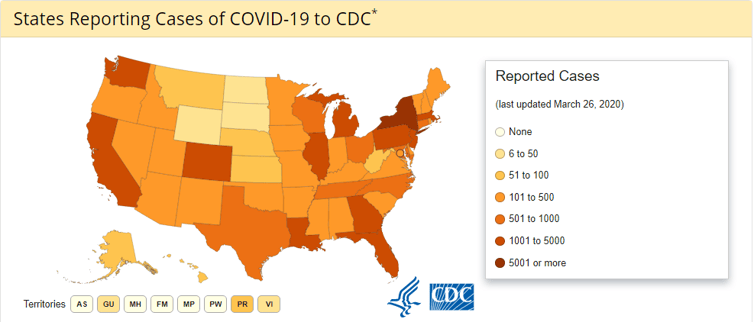A lot has happened in the 10 days since President Trump and his Coronavirus Task Force kicked off the “15 critical days to slow the spread of Coronavirus,” when we were all asked to make some significant changes to our lives. In addition to practicing good hygiene, avoiding large social gatherings, and minimizing discretionary travel, many of us are now working and schooling from home in an effort to “flatten the curve.”
At this point many are wondering how we are progressing along the curve and when can we realistically expect some relief to the public health measures currently in place?
The US continues in the early acceleration phase of the pandemic and many areas of the country (27 states) are seeing the rapid doubling of cases. Measurement of our progress is highly contingent on the availability of testing and, fortunately, we have seen a dramatic increase in testing over the past week.
Most recent CDC/Public Health lab testing rates have increased from only 4,000 daily up to 10,000. Additionally, LabCorp began commercial test production March 5th with Quest close behind on March 9th ramping up overall daily testing rates to 40,000.
CDC guidance for who should be tested continues to focus on those with fever AND shortness of breath or cough. However, with increasing availability, the guidance has been updated to allow local public health departments and individual physicians some discretion when ordering testing.


As test results pour in, the United States finds itself #1 in the world (ahead of #2 China and #3 Italy) for COVID-19 cases with more than 85,000 as of 4:00 am March 27th. Preparation for meeting the medical needs of those infected continue to ramp up. It is important to remember that 81% of people will have only mild symptoms and can manage their illness at home.
The other 19% often suffer pneumonia complications and need hospitalization. There are many dashboards available but one easy tool to follow the pandemic progress is located at https://ncov2019.live/. Percentage changes, rather than absolute daily numbers, give some idea of the curve acceleration and progress towards the peak.
Within the US, states are seeing varying incidences of COVID-19. As testing continues to rise, general public health measures that initially have been applied to all states will allow more targeted measures based on local community spread. For example, in several of the highest incidence locations, governors, mayors, and county officials are implementing shelter in place orders, curfews, or requirements for non-essential businesses to close.

Often the term “sustained community spread” is used to define “hot spots” for Coronavirus transmission. Signals of sustained community spread are the detection of confirmed cases with no epidemiologic relation to travel or known COVID-19 cases. The other signal is more than three generations of viral spread, which means one person who infects another who infects another―sometimes called the reproduction number or R value. The COVID-19 virus has a reproduction number between 2.4 and 3.3, meaning that every infected person infects between 2 and 3 people.
Ultimately, this R value will need to decrease to <1 in order for the US to hit the peak of the pandemic curve. In the above illustration it is easy to see why social distancing and public health measures are so important, as one person becomes four very quickly with this particular virus.
A final note this week on medications for treatment of COVID-19. The President has mentioned some medications that are being tested for their effectiveness in treating the virus. China published some positive results using chloroquine (an older drug used for malaria), with or without the addition of azithromycin (same medicine as a “z-pak”), but the success of these medications has yet to be proven in a controlled study.
Chloroquine itself can be dangerous in certain people due to a prolongation of your heart rhythm or retinal toxicity. It is important to be under medical care before taking any prescription medications. For most patients, over the counter cold medicines can be used to control symptoms along with hydration and rest.
With so much new information available every day, be careful to use reliable sources. Most of the data from this article can be found at https://www.coronavirus.gov/. The site also has a useful section on “rumor control” and some specifics on some special categories of patients to include those who are pregnant.
“Be strong and courageous. Do not be afraid or terrified because of them, for the LORD your God goes with you; he will never leave you nor forsake you.” Deuteronomy 31:6











Comments